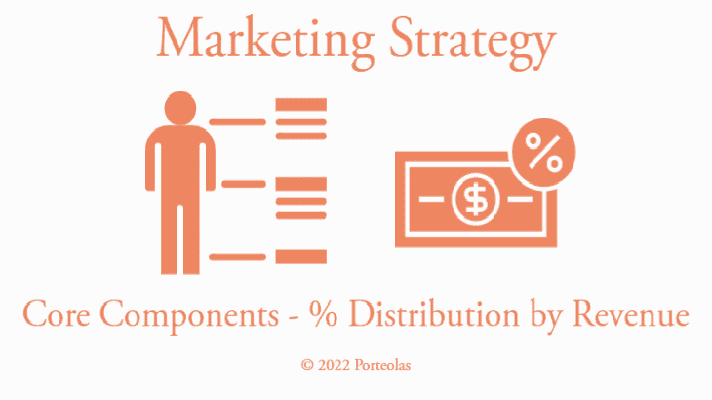
As learned by a small startup that’s bootstrapped its establishment, using only personal post-tax dollars:
Intro / backstory to this post:
Porteolas is a veteran entrepreneurship initiative seeking to bridge corporate data & information strategy experience into a consulting service that eases these endeavors for small businesses.
Through this evolution, I’ve learned marketing “on the fly” – this was my highest hurdle. In doing so, the research and application has revealed to me that my skills lend very well to marketing! Furthermore, I enjoy it!
These efforts have drawn from my aptitude for:
- Technology – researching free & low-cost options; how they integrate with one another to ease end-user experience
- Research – discover my ‘hole’ in knowledge / awareness, close those gaps
- Data – what’s needed, sources of , governance of
- Strategy & storytelling – analytics, data science, visualization
A few critical take-aways for me are:
- Marketing spend is up more than 200%, ever increasing competition for attention
- Small businesses nominally spend 10 – 20% of their monthly revenue on marketing
- It’s easy to overpay (be over sold) for what you need to market your small business
- Current & on-going shifts in social algorithms are proving to be major game-changers
- Shift being away from # of followers / subscribers to engagement with content
- Content (marketing assets) volume/quality need to be significant ramped up
What I have come to understand & how I’ve proceeded:
If time is on your side (you have more time than money), try to explore & do as much as you possibly can for yourself – within your interests – for free (or, essentially free).
- There’s a lot of freemium content & tools out there
- Doing so will enable you to:
- Discover & establish your voice, style, brand – which will ease your ability to communicate that when you’re ready / needing to hire marketing support
- Familiarizing yourself with the skillsets & technologies involved, as well as the time needed to create a marketing asset / campaign – which will enable you to understand / recognize fair-appropriate pricing once you’re paying for these services.
What I paid for – early in my process:
- Logo
- Trademarks
- Trademarking early gave me the peace of mind that no one could usurp my name &/or logo… then… turn around & sue me for use – this does happen; it can turn into 6-figure litigation to prove “first in use”
- Website
- Infrastructure: Ensured I got the domain name I wanted
- Then (at no cost), I proceeded to secure my company name as my ‘handle’ on the social media platforms I wanted to be on
- Creative: hearing how it’s common to spend ~ $3-5K on a website and either not get one, or it not being close to what you thought you’d get… I skipped all that – paid $149/mo for screen share / virtual coaching == built my own site. I’m all in for both ‘creative support & infrastructure’ at ~ $1,500.
- Infrastructure: Ensured I got the domain name I wanted
- Printed media / swag
- Business cards, address labels, & thank you cards
- Pens & a retractable banner
- The banner serves well as a backdrop for virtual meetings (significant improvement over green screens) & can easily be taken to onsite events
What I wished I’d been aware of:
- The cost to attend trade shows – luckily, the one that would have been “pay to play” occurred before I was actually ready to be of service to others. It was an event that was very close to my being ‘open for business’. Since I’m building this business debt-free & without grant funds (to not be beholden to others), I chose to forgo the event this year. I’m sharing this with you for your awareness & planning.
Given my research & experience, this is how I’m approaching estimating my marketing strategy & budget – tiers are approximated by revenue &/or stage of business achieved:
* the %s stated below aren’t “hard’n fast, gospel” – simply attempting to reflect prioritization & how it shifts during development & evolution:
At first, doing your due diligence research & covering initial creative needs are highest priority. Then, you’ll want to begin integrating data & infrastructure into your business model (mind you, don’t push this off any longer than you absolutely have to — you’ll create a backlog, potentially even lose early data). Finally, you’ll be better positioned to understand which marketing content to “boost” with paid ads.
Eventually equitable focus may well-serve you to remain strategically relevant & competitive.

Some examples of categorical support, not an exhaustive list:
- Creative
- Logo
- Website infrastructure
- Website development
- Trademarks
- Social media freelancer
- Research
- Market, economic trends
- Market share, demands
- Non/ideal customer
- Shifts in platforms – technology, algorithms
- Surveys: industry, brand, product, advertising, customer
- A/B testing: website, product features
- Data
- Infrastructure: Cloud, database, API keys
- Analyses: surveys, A/B testing
- Analyses & data science: industry benchmarks, your specific metrics & forecasts
- Purchased
- Paid ads: Google AdWords, boosting on social media platforms
- Printed media: brochures, business cards
- Swag / Gifts: pens, padfolios, water bottles as examples
Stay tuned for deeper diving / developmental content:
I’ll be sharing my knowledge from 15yr corporate experience & how I’m drawing from those experiences on my Porteolas journey:
- Subscribe to my blog
- Signup on my newletter, using ‘Connect‘ form
- Connect on social media, Porteolas can be found on:
- YouTube
Thank you for reading my blog about marketing strategies – I hope it proved informative.



